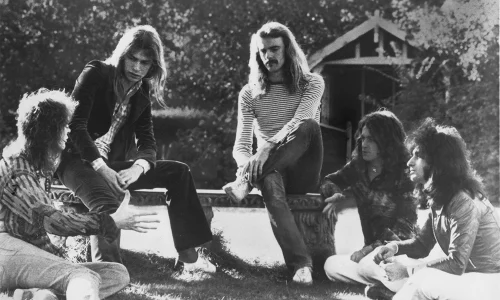In the annals of rock history, few bands have sparked as much innovation and left as indelible a mark on the landscape of music as Yes. Formed in 1968 amidst the creative ferment of the late sixties, Yes emerged as a cornerstone of progressive rock, a genre that sought to push the boundaries of the traditional rock format. Known for their intricate compositions, complex lyrical themes, and virtuosic musicianship, Yes didn’t just play music; they orchestrated elaborate auditory landscapes that transported listeners beyond the confines of conventional rock.
Delve deep into the musical ethos of Yes, exploring how they not only contributed to but also shaped the evolution of progressive rock. Through a detailed examination of their groundbreaking albums, key tracks, and innovative techniques, we will uncover how Yes’s visionary approach not only defined a genre but also influenced generations of musicians to come. By charting their journey from the late 1960s to their established legacy in the music industry, we’ll highlight how Yes became synonymous with the art of progressive music-making, turning complex musical expression into a compelling, emotive experience.
The Origins of Yes
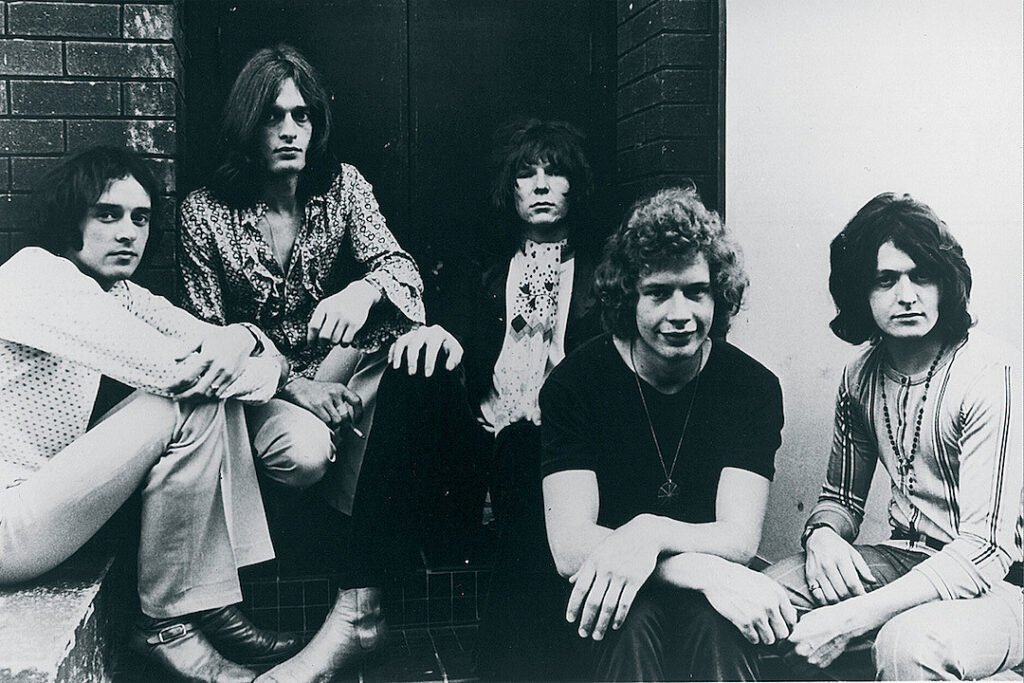
Yes was born in a milieu of musical experimentation and cultural shifts, coming together for the first time in 1968 in London. The band’s core lineup coalesced around vocalist Jon Anderson, bassist Chris Squire, guitarist Peter Banks, keyboardist Tony Kaye, and drummer Bill Bruford. These musicians, each bringing a distinctive flair and background, converged at a time when the boundaries of rock music were being pushed and pulled in myriad directions. Their formation was less about a deliberate intent to start a progressive rock band and more about a shared desire to explore and expand the musical possibilities beyond the mainstream rock scenes of the 1960s.
The early days of Yes were marked by intense rehearsals and a commitment to musical excellence, with gigs at clubs like the Marquee, which became testing grounds for their complex compositions and intricate performances. Their self-titled debut album, “Yes,” released in 1969, showcased their burgeoning ability to meld melodic harmonies with ambitious musicianship, though it was still nascent in its progressive leanings.
Musical Influences
The sound that Yes developed was deeply rooted in a variety of musical influences that each member brought to the group. Jon Anderson’s passion for vocal harmonies was influenced by listening to folk groups and rock bands like The Beatles, whose rich textures and lyrical depth were evident in Anderson’s songwriting. Chris Squire was influenced by the harmonic innovations of The Beatles and the melodic basslines of Paul McCartney, yet his approach also drew heavily from classical music, particularly the counterpoint techniques which became a staple in Yes’s compositions.
Beyond these, jazz played a crucial role in shaping the band’s rhythmic and improvisational style. Bill Bruford’s jazz-infused drumming techniques contributed significantly to the band’s sound, offering a dynamic and fluid foundation over which the layers of keys, guitars, and vocals could interplay. Classical music’s influence was perhaps most pronounced in the keyboard arrangements of Tony Kaye and later Rick Wakeman, whose work incorporated the complexities of classical compositions, enhancing the band’s music with a grandiose and cinematic quality.
Defining Progressive Rock

Progressive rock, often abbreviated as prog rock, is a subgenre of rock music that emphasizes artistic expression over mainstream appeal. It is characterized by its ambitious, sometimes even labyrinthine musical structures that go well beyond the verse-chorus-verse format typical of traditional rock. At the heart of progressive rock are complex compositions that weave together extended instrumental sections, shifting time signatures, and intricate rhythms that challenge both the musicians’ technical prowess and the listeners’ expectations.
Instrumental virtuosity is a hallmark of the genre, with musicians showcasing their mastery through elaborate solos and the seamless integration of diverse musical instruments and technologies. Progressive rock also often incorporates symphonic elements, with keyboards and synthesizers playing a pivotal role in creating expansive soundscapes.
Lyrically, prog rock tends to delve into themes far broader and more abstract than those found in standard rock fare. Lyrics might explore philosophical queries, fantastical journeys, or complex social issues, often presented in the form of concept albums that maintain a thematic and narrative continuity across tracks. This depth gives the music a literary quality that invites listeners to interpret and find meaning beyond the immediate allure of melodies and harmonies.
Contextualizing the Era
The late 1960s and early 1970s were a period of immense social, political, and cultural upheaval. As the counterculture movement gained momentum, there was a growing disillusionment with traditional norms and an eagerness to challenge established boundaries, not just socially but artistically. Music, as a reflection of these times, began to mirror the complexity and uncertainty of the era.
Rock music, which had been a vehicle for youth expression predominantly through blues-based formats, began to seem too simplistic for the new ideas that artists wanted to explore. Bands like Yes, along with their contemporaries like Pink Floyd, King Crimson, and Genesis, saw an opportunity to redefine what rock music could represent. They turned to more elaborate compositions, drawing inspiration from classical, jazz, and folk to develop a style that was as intellectually stimulating as it was emotionally engaging.
This need for innovation was also a response to the technological advancements of the time. The late ’60s and ’70s saw significant developments in musical instrument technology, including the Moog synthesizer and the Mellotron, which expanded the sonic possibilities available to musicians. Progressive rock bands were among the first to adopt these new tools, using them not merely as novel effects but as integral components of their sound.
Progressive rock, therefore, emerged not only as a musical style but as an artistic philosophy that sought to push the boundaries of conventional music. It offered a new musical lexicon that was better suited to the complex sentiments of the time, encapsulating the spirit of an era that challenged norms and valued depth and innovation. This commitment to artistic advancement and complexity made progressive rock a defining genre of its time, with Yes at the forefront, leading the charge into new musical territories.
Breakthrough Albums and Key Tracks
Fragile (1971)
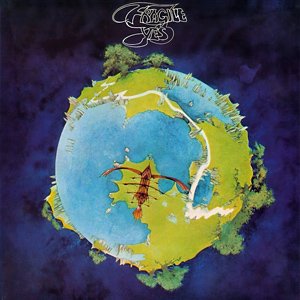
“Fragile” marked a significant turning point for Yes, both artistically and commercially. This was the first album to feature keyboardist Rick Wakeman, whose classical influences and mastery of the Moog synthesizer added a new dimension to the band’s sound. “Fragile” is renowned for its use of complex arrangements and sophisticated production techniques. It includes a mix of individual showcases and full-band compositions, highlighting each member’s virtuosity. The album achieved critical and commercial success, serving as a powerful example of how progressive rock could appeal to a broader audience without sacrificing complexity.
Close to the Edge (1972)
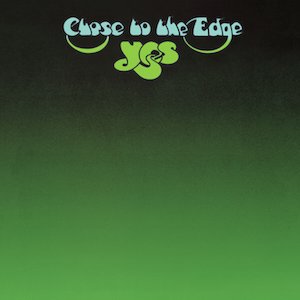
Considered by many as one of the greatest progressive rock albums ever made, “Close to the Edge” features just three tracks, each a suite of movements that unfold over an extended runtime. The title track, which occupies the entire first side of the album, is a suite divided into four seamlessly connected sections. This album exemplifies the band’s ability to blend dynamic shifts, thematic variations, and intricate instrumental performances into a coherent whole. The lyrical content, inspired by Herman Hesse’s “Siddhartha” and steeped in spiritual imagery, adds to the album’s profound and reflective quality.
Tales from Topographic Oceans (1973)
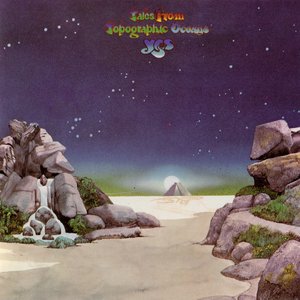
This double album was one of the band’s most ambitious projects, consisting of four tracks that stretch across four album sides. Inspired by Shastric scriptures, each piece explores themes of enlightenment and spiritual journey. Although it divided critics for its length and complexity, “Tales from Topographic Oceans” is a testament to Yes’s willingness to push the boundaries of the album format. Its elaborate compositions and lush, layered soundscapes have made it a landmark in the genre, demonstrating the band’s full embrace of progressive rock’s possibilities.
Track Analysis
“Roundabout” (from Fragile) “Roundabout” begins with an iconic acoustic guitar riff, which soon transitions into a full-band explosion of dynamic interplay. The song is known for its shifting tempos, complex bass lines, and Jon Anderson’s distinctive vocals. The lyrics, while seemingly abstract, evoke images of a journey, reflecting the song’s undulating musical motion. This track remains one of Yes’s most recognized and is a staple of classic rock radio.
“And You and I” (from Close to the Edge) “And You and I” is divided into four parts, each flowing into the next. The track combines elements of folk, rock, and symphonic music, creating a rich tapestry that showcases the band’s skill in fusing diverse musical genres. The lyrics are introspective and poetic, exploring themes of unity and transcendence. The song’s structure—featuring acoustic segments that build into powerful crescendos—illustrates the band’s expertise in dynamic composition.
“The Revealing Science of God (Dance of the Dawn)” (from Tales from Topographic Oceans) This track is a prime example of Yes’s foray into extended compositions. It begins with a lengthy ambient intro, setting a meditative tone before unfolding into an elaborate progression of themes and motifs. The integration of electronic effects with traditional rock instrumentation creates a sprawling, immersive listening experience. Lyrically, it delves into spiritual awakening, mirroring the music’s expansive feel.
These albums and tracks not only highlight Yes’s innovation and technical skill but also their role in defining and advancing the genre of progressive rock. Each piece is a complex work that rewards attentive listening and deep engagement, encapsulating the essence of what made Yes a pivotal force in the world of music.
Musical Innovations and Techniques
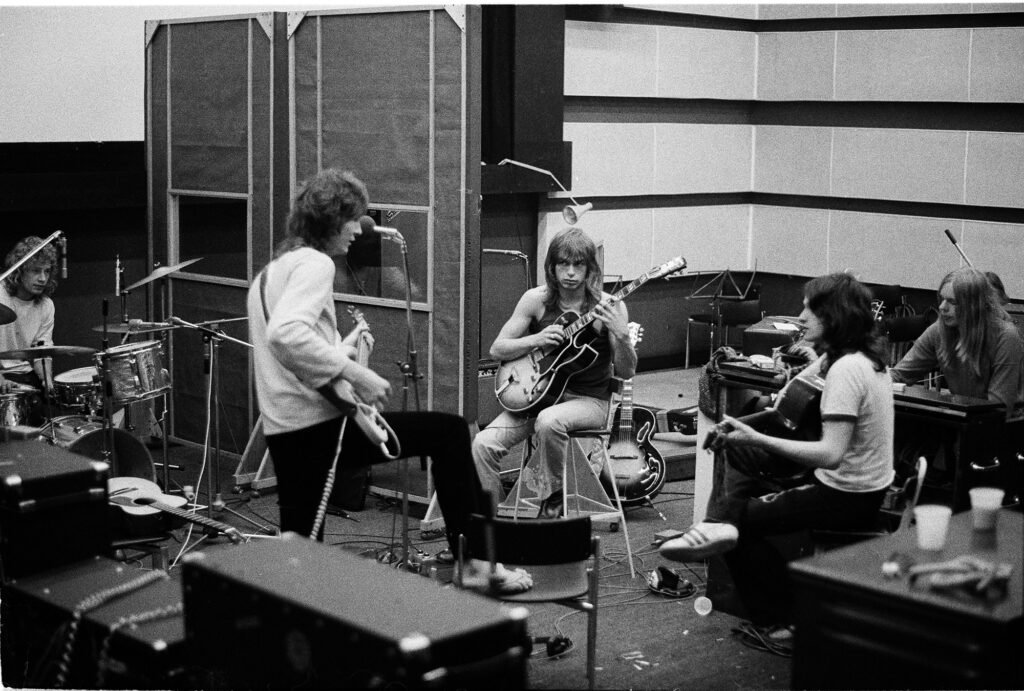
Yes is renowned not only for their compositions but also for the individual virtuosity of its members, each bringing a high level of technical mastery and distinct stylistic contributions that defined the band’s sound.
Rick Wakeman’s Keyboard Solos Rick Wakeman’s influence as a classically trained keyboardist cannot be overstated. His arrival in the band coincided with Yes’s shift towards more elaborate musical arrangements. Wakeman integrated a variety of keyboards, including the Mellotron, the Minimoog, and the Hammond organ, into the band’s soundscape. His solos often ventured into baroque and classical territory, adding a dramatic flair that became a hallmark of Yes’s style. His performances on tracks like “Close to the Edge” and “Heart of the Sunrise” are notable for their complexity and emotive power, weaving together rapid arpeggios and lush, orchestral textures.
Steve Howe’s Guitar Work Steve Howe brought a diverse array of guitar styles to Yes, utilizing everything from electric and acoustic guitars to lap steel guitars. Howe’s versatility allowed him to cross musical boundaries effortlessly, incorporating elements of country, jazz, and classical into his playing. His work is characterized by its precision and adaptability, capable of both fiery solos and intricate, melodic phrases. The opening acoustic guitar riff of “Roundabout” and the soaring electric solos in “Starship Trooper” showcase his ability to blend technical prowess with expressive musicality, making each performance uniquely compelling.
Production Techniques
Yes was at the forefront of using advanced recording techniques that contributed significantly to the progressive rock genre’s development. Their approach to production involved innovative uses of technology and a collaborative relationship with audio engineers like Eddie Offord, who played a crucial role in shaping the band’s sonic signature.
Layering and Textural Depth Yes’s recordings frequently employed extensive layering of instruments and vocals, creating rich, textured soundscapes that were both expansive and detailed. This technique is evident in albums like “Tales from Topographic Oceans,” where the layering of multiple keyboard tracks alongside guitars, bass, and vocals creates a dense, immersive listening experience. The use of overdubbing allowed the band to achieve a symphonic richness in their music, which was groundbreaking at the time.
Innovative Use of Effects and Studio Technology
The band made extensive use of various studio effects, including reverb, echo, and the groundbreaking use of phase shifting, which added a psychedelic quality to their sound. The use of flanging and double-tracking vocals and instruments also helped create a surreal, ethereal quality that defined many of their most famous tracks. Additionally, Yes experimented with the placement of microphones and the spatial aspects of sound, which allowed them to achieve a three-dimensional auditory experience in their recordings.
Challenges and Controversies
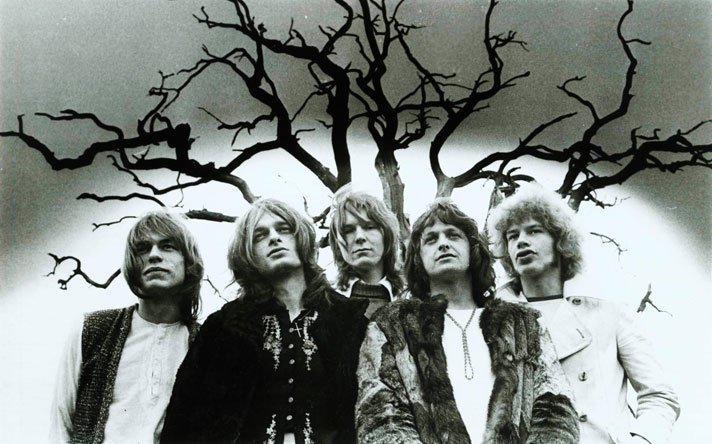
Throughout its history, Yes has been characterized by numerous lineup changes, each bringing its own set of challenges and influences on the band’s sound and dynamics. The departure and subsequent replacement of key members not only tested the group’s resilience but also shaped the evolution of their musical identity. From the early days, changes began with the replacement of guitarist Peter Banks with Steve Howe, who brought a new level of technical expertise and a broader stylistic range to the band. Later, Rick Wakeman’s arrival and departure, followed by his several returns, introduced shifts in the keyboard-driven soundscapes that Yes was known for.
Each lineup change brought with it a new flavor, as different members contributed their unique talents and perspectives. For instance, when drummer Bill Bruford left to join King Crimson and was replaced by Alan White, the band’s rhythmic approach shifted from jazz-inflected styles to a more rock-oriented foundation. These continual shifts sometimes led to stylistic inconsistencies and periods of adjustment that were reflected in the band’s output, influencing both their creative processes and how their music was received by fans and critics alike.
Criticisms
Progressive rock, as a genre, has faced criticisms for what some perceive as its pretentiousness and inaccessibility. Detractors argue that the lengthy compositions, complex lyrical themes, and the emphasis on technical prowess over straightforward emotional expression can be alienating to listeners who prefer more conventional and readily digestible music forms. Yes, in particular, has not been immune to such critiques, especially with ambitious projects like “Tales from Topographic Oceans,” which even divided the band’s own fanbase with its sprawling, intricate tracks that some found self-indulgent.
Moreover, the genre has been criticized for its perceived elitism, often suggested by its heavy reliance on advanced musicianship and sophisticated production techniques. This aspect has led to accusations of a disconnect between the artists and their audience, where the music could be seen as serving the interests of the musicians more than those of the listeners.
Despite these challenges and controversies, Yes’s contribution to music illustrates a broader cultural and artistic ambition. Their willingness to experiment and push musical boundaries reflects a commitment to artistry that has inspired countless other musicians and bands. While lineup changes introduced shifts in style and focus, they also brought fresh ideas and innovations that kept the band’s sound evolving.
Similarly, while criticisms of pretentiousness point to a potential barrier in music appreciation, they also underscore the band’s role in expanding the horizons of rock music to include a richer variety of sounds and styles, thereby broadening what rock music could aspire to achieve. These controversies and challenges, rather than diminishing the band’s impact, highlight the dynamic and ever-evolving nature of Yes’s musical journey.
Influence on Other Bands and the Evolution of Prog Rock
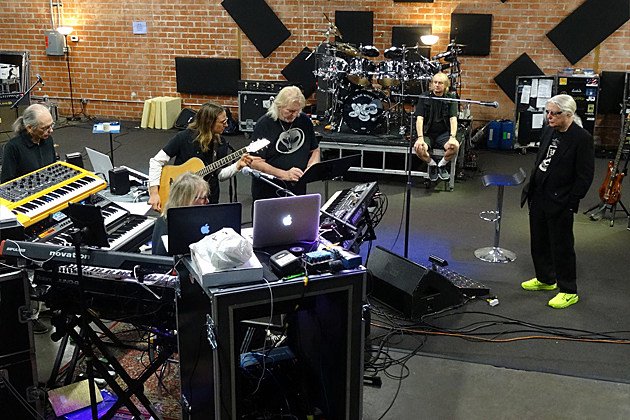
Yes’s profound impact on the progressive rock genre can be traced through their influence on contemporaries and the successive generations of musicians who embraced and expanded upon their innovations. During the peak of their creative output in the 1970s, Yes set a high bar for musical complexity and artistic ambition that inspired a whole host of bands, from contemporaries like Genesis and Rush to later prog rock icons like Marillion and Dream Theater.
Rush, in particular, has often cited Yes as a significant influence on their early work. Geddy Lee, Rush’s lead vocalist and bassist, has acknowledged the inspiration derived from Chris Squire’s complex bass playing and the layered, dynamic compositions that Yes pioneered. This influence is evident in Rush’s intricate arrangements and ambitious concept albums that echo Yes’s thematic and structural complexity.
Marillion and Dream Theater took cues from Yes’s blend of technical proficiency and narrative depth, pushing these elements further with modern production techniques and contemporary thematic explorations. Dream Theater’s guitarist John Petrucci has mentioned Yes as part of his musical foundation, particularly pointing to their album structures and the seamless flow of long tracks as influencing his approach to composition.
Legacy in Modern Music
Yes’s legacy extends beyond the confines of what is traditionally considered progressive rock, influencing a wide range of modern progressive and experimental artists across various genres. Bands like Tool and Porcupine Tree have drawn inspiration from Yes’s willingness to explore unconventional song structures and time signatures, incorporating these elements into their heavier, more modern soundscapes.
Additionally, the rise of post-rock and ambient music movements can also trace a lineage back to Yes’s expansive and atmospheric compositions. Bands such as Sigur Rós and Explosions in the Sky, while not directly akin stylistically to Yes, embody the spirit of experimentation and emotional depth that Yes championed, creating immersive soundscapes that prioritize mood and texture over traditional song formats.
In the realm of electronic music, artists like Moby and Aphex Twin have acknowledged the influence of progressive rock’s complexity and innovative use of technology, aspects that were significantly advanced by Yes’s experimental approaches in the studio. The band’s exploration of synthesizers and sound effects paved the way for electronic artists to integrate these tools in new and creative ways.
Yes’s impact is thus felt not only in the direct lineage of progressive rock but also in the broader evolution of music, where their pioneering spirit continues to inspire artists to push the boundaries of what is possible. Their enduring legacy in modern music is a testament to their role as innovators, whose contributions helped reshape the musical landscape, inspiring artists to explore beyond the conventional boundaries of genre and form.
